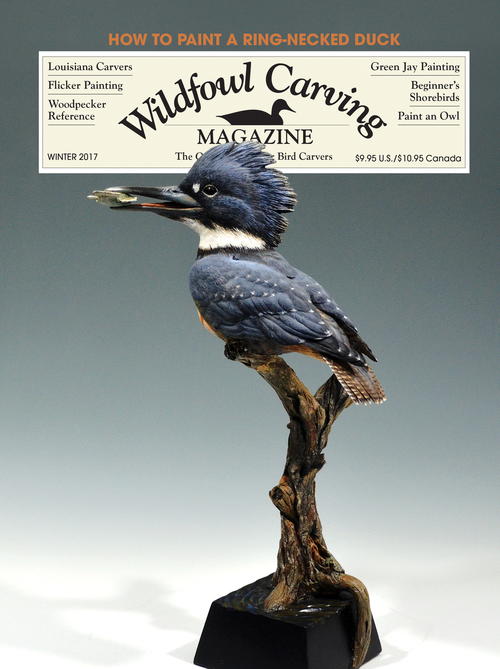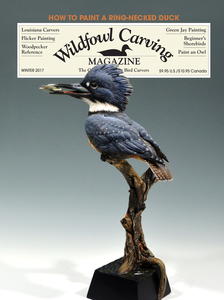Louisiana Traditions
Editor's Note

One of my favorite things about this job is attending shows and seeing the work our readers and contributors create. I’m always thrilled to see a carving we’ve featured in the magazine. It’s like spotting a celebrity. At the Easton Waterfowl Festival in November I saw work by Jeff Rechin, Tom Baldwin, and Glenn McMurdo that appeared in our pages—including the flicker that Jeff paints, starting on page 54 in this issue. That was pretty cool.
I also got to attend the Louisiana Waterfowl Festival in Mandeville in October. I had never been to that show before. Hurricane Katrina did considerable damage to Louisiana in 2005 and one of its many victims was the festival, a thriving competition that took place in New Orleans. The storm had a devastating effect on the show, which was sponsored by the Louisiana Wildfowl Carvers and Collectors Guild. More than three-quarters of the guild members lost their homes to the storm and its floods, and many of them moved out of the state as a consequence. It seemed that the Louisiana show had been killed off by Mother Nature.
It hadn’t. The show returned from the dead in 2009, albeit at a new location. The show moved to the Castine Center in Mandeville, a town just north of Lake Pontchartrain. As has been the case during the last few years, the generous prize money lured some of the carving world’s top talent, as well as the home-grown carvers who carry on a Louisiana tradition by creating some of the finest work you will find anywhere.
One thing creating a stir at this year’s show was a new book, A Legacy Preserved: Contemporary Louisiana Decoy Carvers by Harvey J. Lewis. It’s a comprehensive and well-illustrated history of the state’s carving tradition and includes chapters on many of today’s top carvers. (You can find an excerpt in the Winter 2017 issue.) Also creating a stir was the presence of the Brunet family, which Lewis dubs “Cajun Carving Royalty.” Tan Brunet and his sons Jett and Jude appeared at the show, and cameras flashed as they held court at a table in the back and signed copies of Lewis’s book. That was pretty cool, too.
Wildfowl carving is alive and well in Louisiana, and all over the U.S. and Canada as well. Get out and find it! Better yet, create it!
This article is from the Winter 2017 issue. For more information on our issues, check out our issues page.
Read NextA World of Birds



